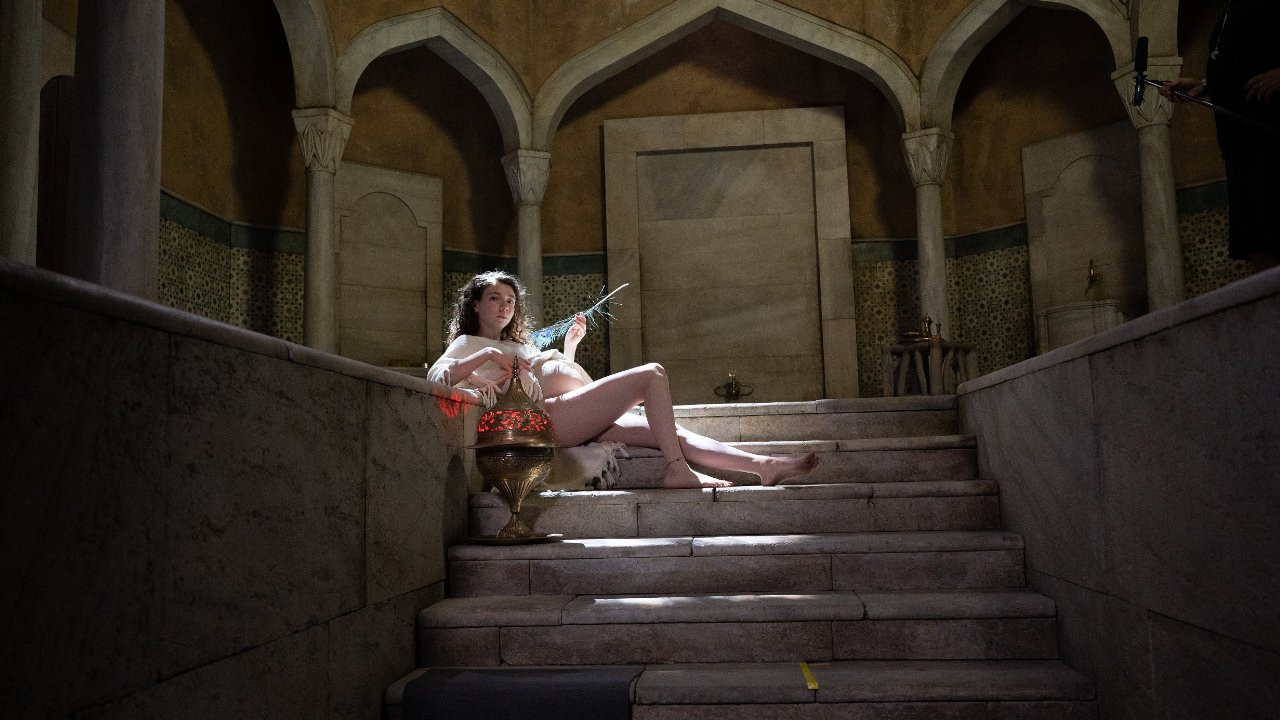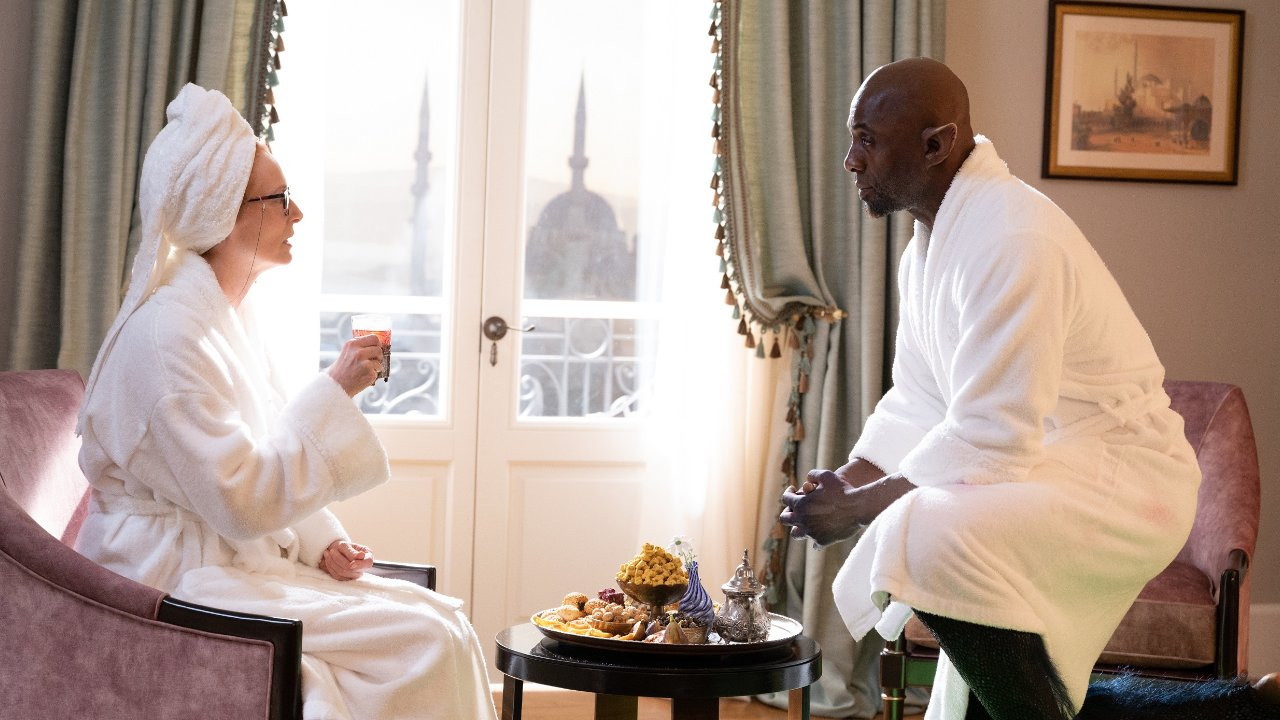With “Mad Max: Fury Road”, the wait for George Miller’s highly anticipated latest movie “Three Thousand Years Wait” is over! Although, we heard some news from Cannes, where it was shown out of the competition. There are those who love, and those who say it never happened. But no one said it was a very good movie.
Adapted from AS Byatt’s 1994 short story ‘The Djinn in the Nightingale’s Eye’, the film has another intriguing aspect for us, of course. Almost 70% of the story takes place in Istanbul. There are also many Turkish names among the players. Although, after seeing touristic places such as Sultanahmet, Grand Bazaar and Pera Palas for a short time, most of them are in a hotel room, but we know that we are in Istanbul. Here is a fairy tale movie in which the two important characters of the movie dive into a long conversation at Pera Palace and embark on a journey of three thousand years.
The fact that the themes and places in the film are ‘domestic and national’ will naturally cause us to evaluate the film from this perspective. Admittedly, we are not Miller’s priority, and I don’t think he cares much about how we perceive the film. After all, it is a film made by a ‘Western’ director for the West. So what he tells them and how he tells them is his main priority.
I used the term a fairy tale movie for the production. There are reasons to justify this. The main character of the movie, Alithea Binnie (Tilda Swinton), is a professor of narratology. In other words, he works on fairy tales, so we enter the movie with his voice over. In fact, in this opening, Alithea brings us to say, “What you hear as fairy tales today are the realities of the past”. To put it another way: Every fairy tale is a little bit more real. Alithea is coming to Istanbul for a conference. His colleague Prof. He is welcomed by Günhan. She’s giving a strange seminar. Then, he takes a blue nightingale that he sees in the Grand Bazaar and loves so much, and settles into the room in Pera Palace where Agatha Christie is supposed to have written ‘Murder on the Orient Express’. When he starts rubbing the nightingale to clean it, a Genie (Idris Elba) comes out as expected. The genie asks Alithea to make three wishes to gain her freedom, but she refuses because she knows it will be part of a demonic tale full of lessons.

Thus, we begin to listen to the adventure of the genie that lasted for three thousand years, with flashbacks. In the first story, the genie takes the audience to the relationship between the Queen of Sheba and King Solomon. Suleyman, who managed to make Saba fall in love with him, imprisoned the genie in the bottle. However, the tale told by the genie differs from the known version. But he tells it firsthand, after all! Then, after 2,500 years of waiting, we come to the reign of another Süleyman, Kanuni. This time the cap of the bottle is opened by a young and beautiful female slave in the harem. Gülten is in love with Süleyman’s eldest son Mustafa. Let’s not give spoilers for those who haven’t watched it, but this hospitality in Ottoman lands continues until the time of Murat the 4th in the palace. Then the Gin waits in a bottle in the waters of the Bosphorus, until the 19th century. This time, a fictional character… Marshmallow, the third wife of an old man, takes Gin out of his bottle. His rapprochement with this science-loving woman can’t set him free, either, and he is imprisoned once again, until he reincarnates in Alithea’s hotel room.
Let’s come to the ‘domestic and national’ interpretation of the film. First of all, there is a texture incompatibility between the tales that are the source of the film. Namely, the film takes its inspiration from ‘The Thousand and One Nights’ and religious legends. But these are actually narratives of the East in origin and influence, and this East is actually quite far from Istanbul. For example, the jinn takes a place in our culture as an ‘evil’ creature whose name is not mentioned and is not mentioned much. Although it is not always well received, placing a genie in the image of Istanbul does not look like a Baghdad, for example. In a way, Miller is trying to extract the Baghdad from the fairy tales from Istanbul.

It can be said that Miller’s aim is to disrupt the structure of fairy tales. I don’t think it was very successful. There is also a mismatch between characters raised in fairy tales such as Suleiman or the Queen of Sheba, and realities such as the Ottoman sultans and their palaces. While the fairy tale relationship between Saba and Süleyman is working, Süleyman and his son Mustafa; 4 Making the events between Murat and his brother İbrahim 1. into a fairy tale does not complement each other. Right here, we encounter the fact that the Ottoman Empire was constructed as a fairy tale world within the whole Eastern package. Not surprisingly, Miller treats both Süleyman and Murat 4 as if they were fairy tales. There will certainly be those who will come out of here and make “ancestral” literature. It is okay for Miller to prefer to tell these two characters and their period like a fairy tale. The problem is that while doing this, he tries to turn the recent reality into a fairy tale instead of constructing a new fiction. Another ‘domestic and national’ situation I got stuck with is the use of Turkish in the film. It will not be noticed outside of Turkey, but Idris Elba’s use of Turkish in the film is quite problematic. However, it is as if they tried to emulate the Turkish of Turkish actors as well. Everyone talks as if they learned later. However, in a few minutes in the hotel room, our Jinn can speak English fluently. But like these, our ‘domestic and national’ viewing experience. Thus, a Western eye may fully accept this whole package of fairy tales.
The real big problem is experienced in the last episode, after Alithea and Gin leave Istanbul and go to London. The fairy-tale atmosphere immersed in the eastern atmosphere and history suddenly leaves its place to the real world in this episode. Miller’s narrative begins to falter even more when the shared interest in the three thousand-year-old past between Alithea and the Goblin gives way to mutual interest. The film loses its magic as it transitions from a fairy tale in which you put the facts into a solid reality that leaves no room for the fairy tale. We are left with neither a share of the story that can come out, nor three apples that will fall from the sky…

Despite all this, “Three Thousand Years Wait” is a lovable movie. For the author of these lines, the seven-year wait for the director’s new film has been a bit of a disappointment. But George Miller’s credit never ends with us. Now we have set our clocks to the movie shot in the name of “Furiosa”, the hero of “Mad Max Fury Road”, which is planned to meet with the audience in 2024.
